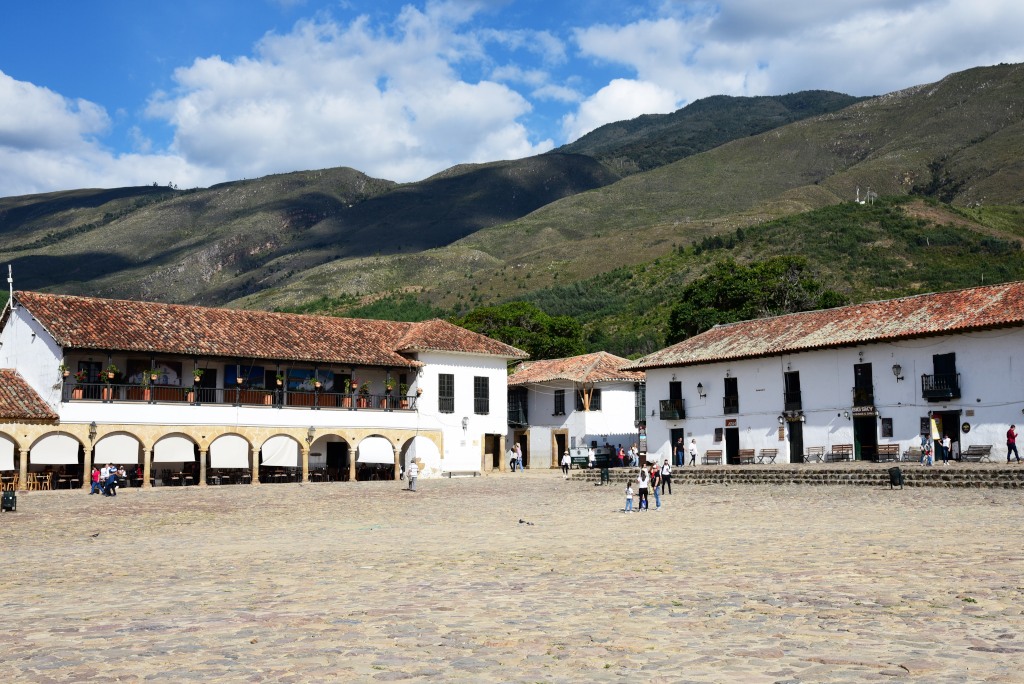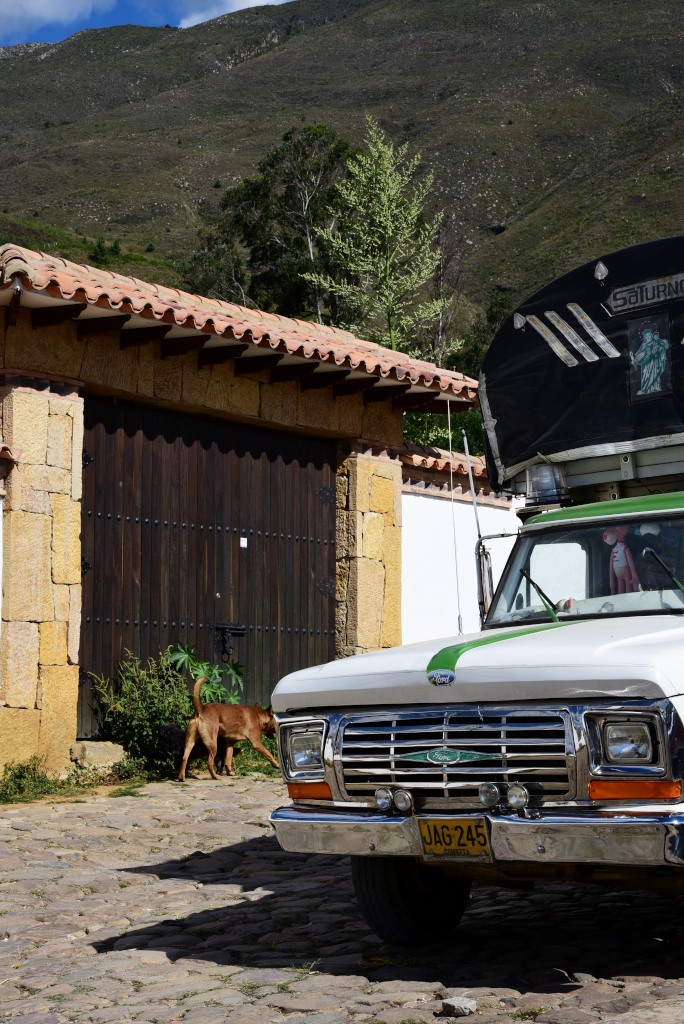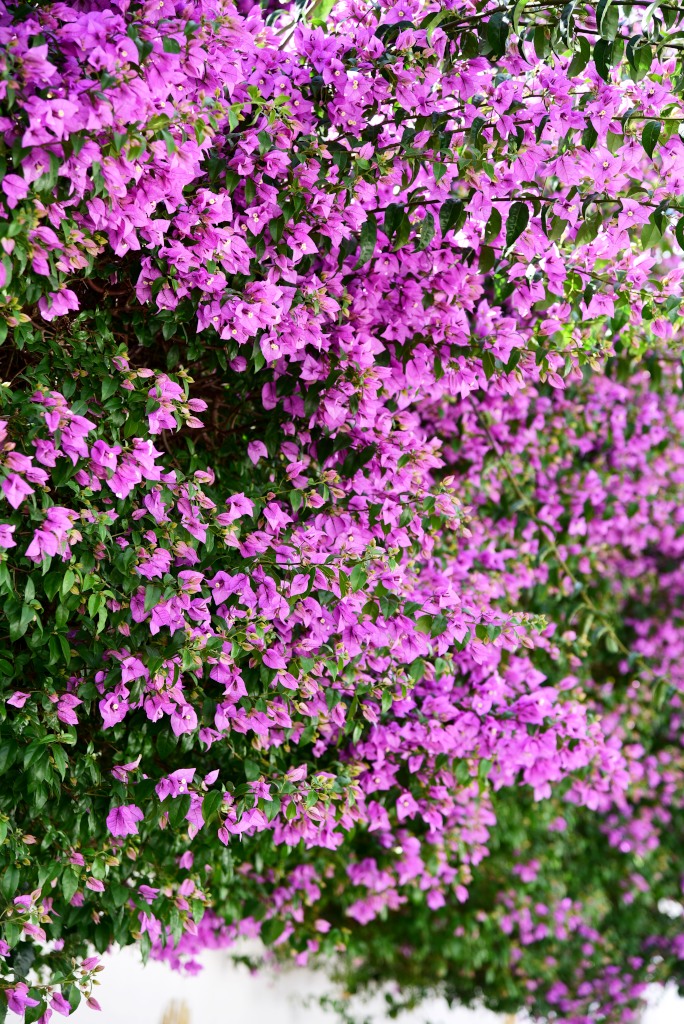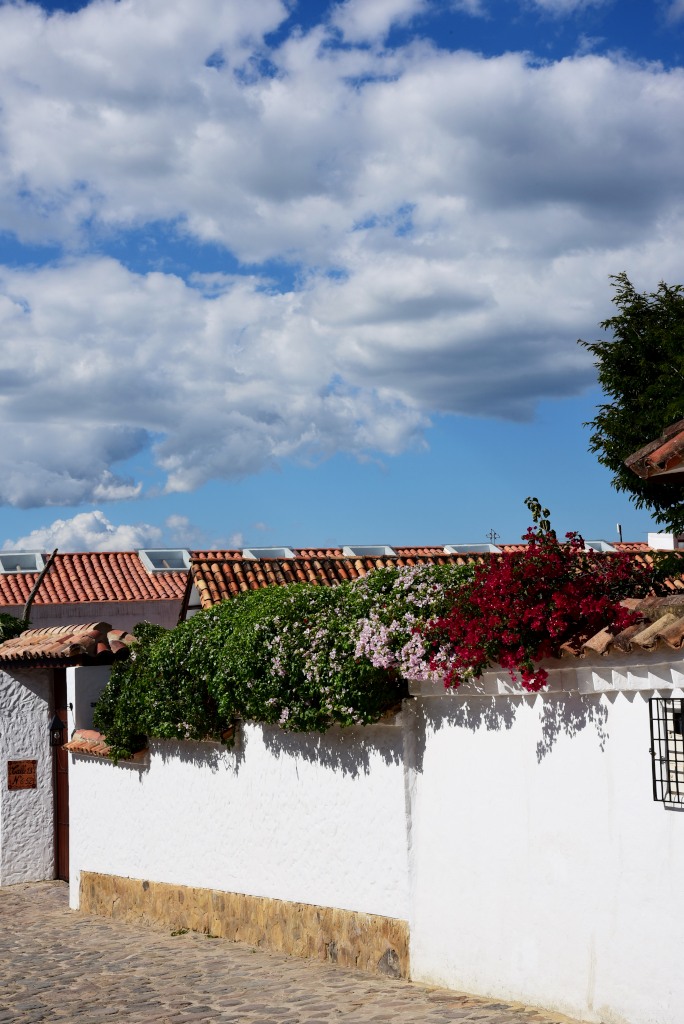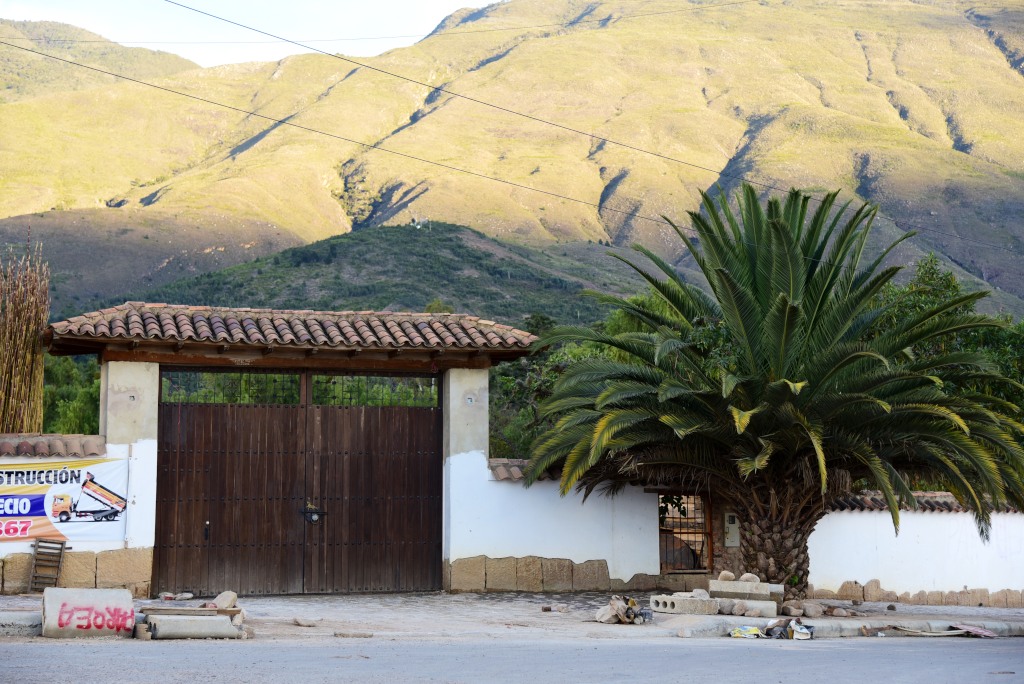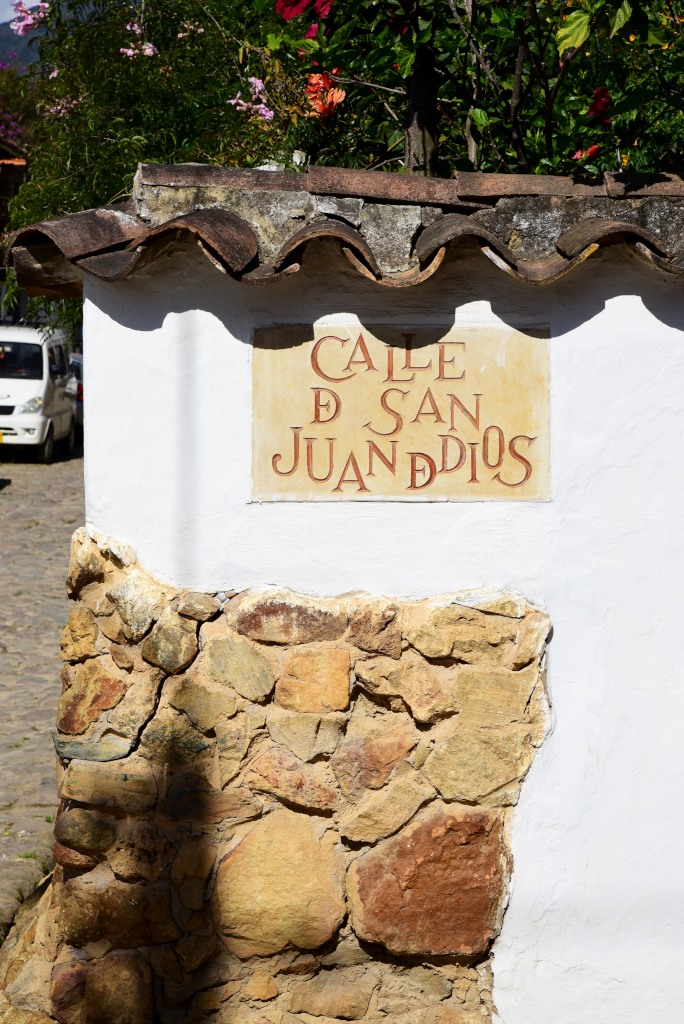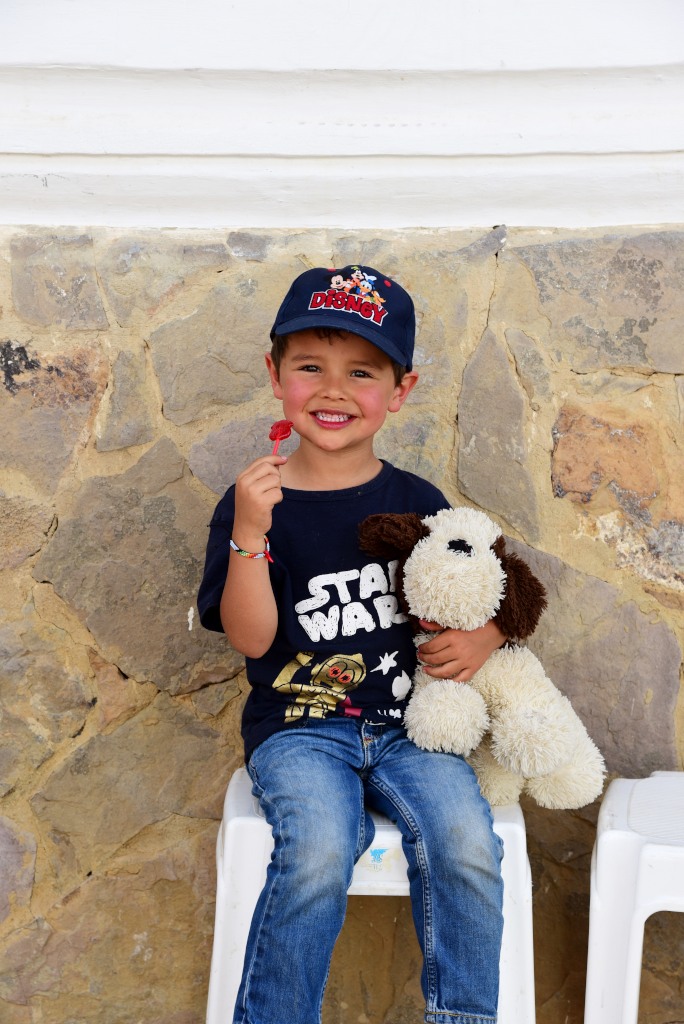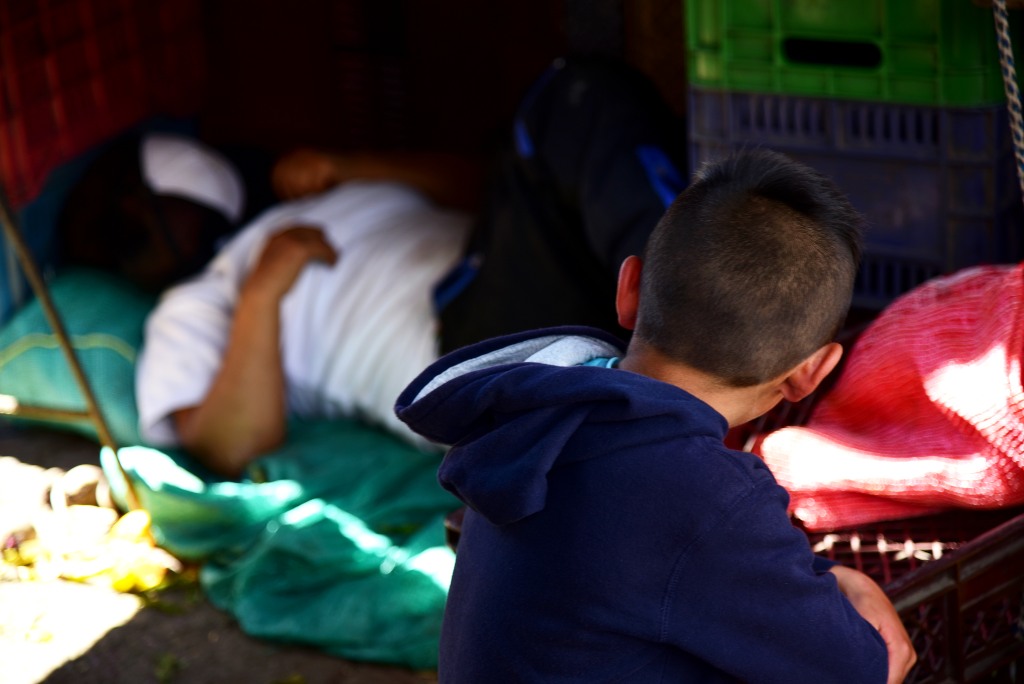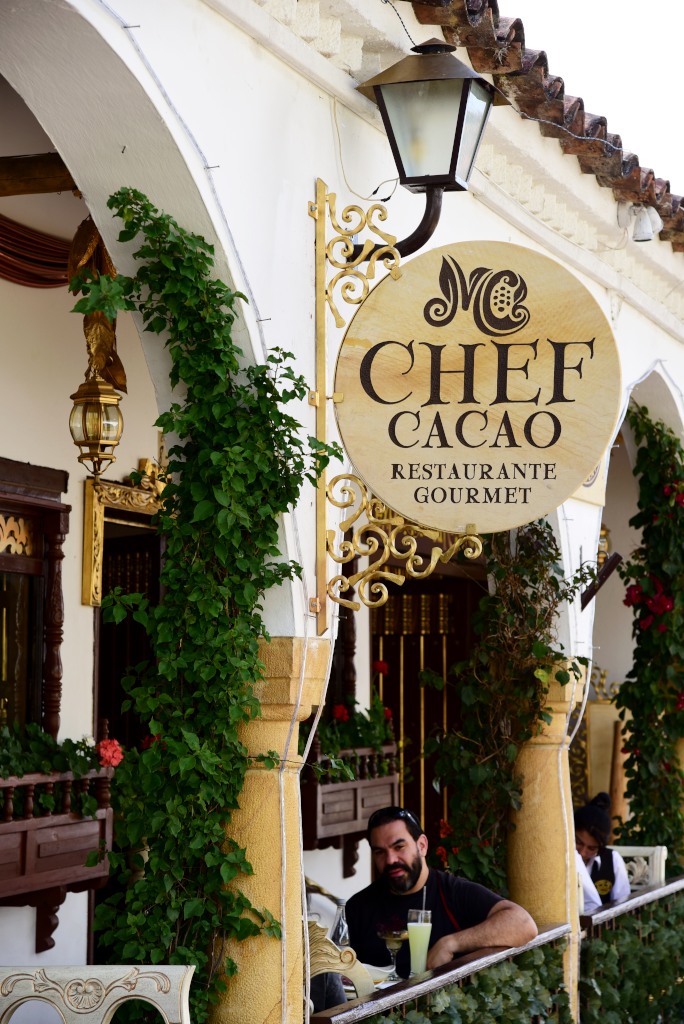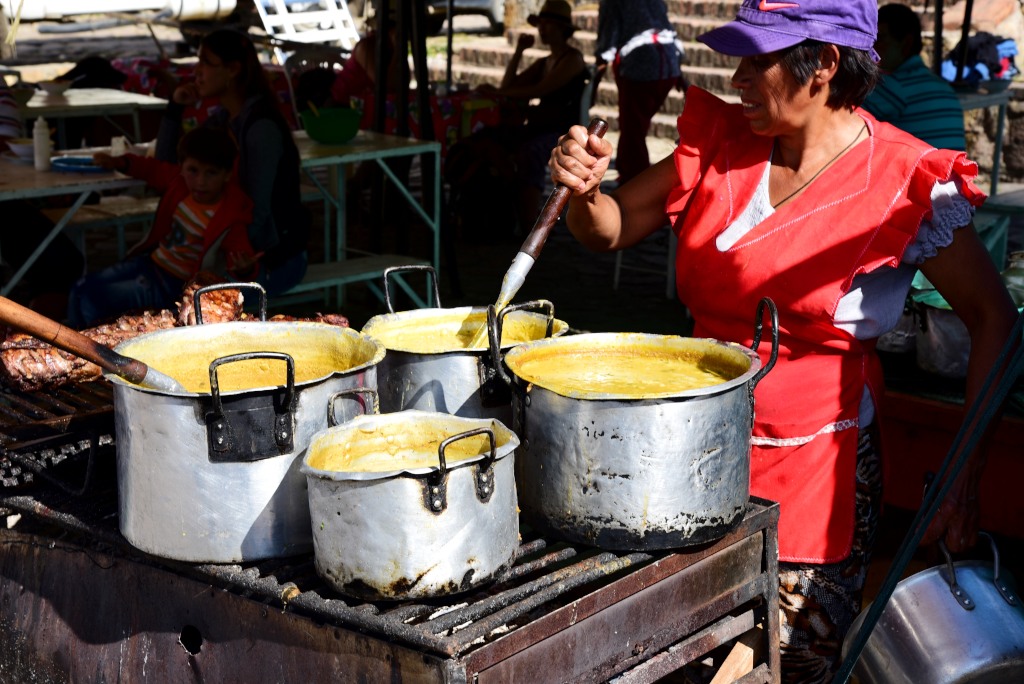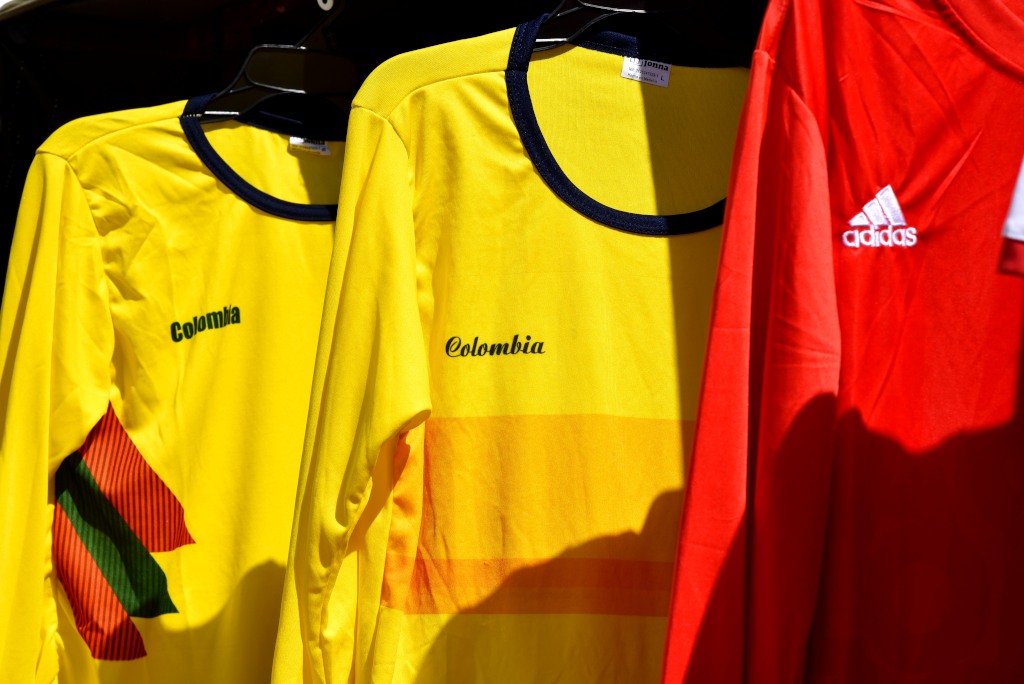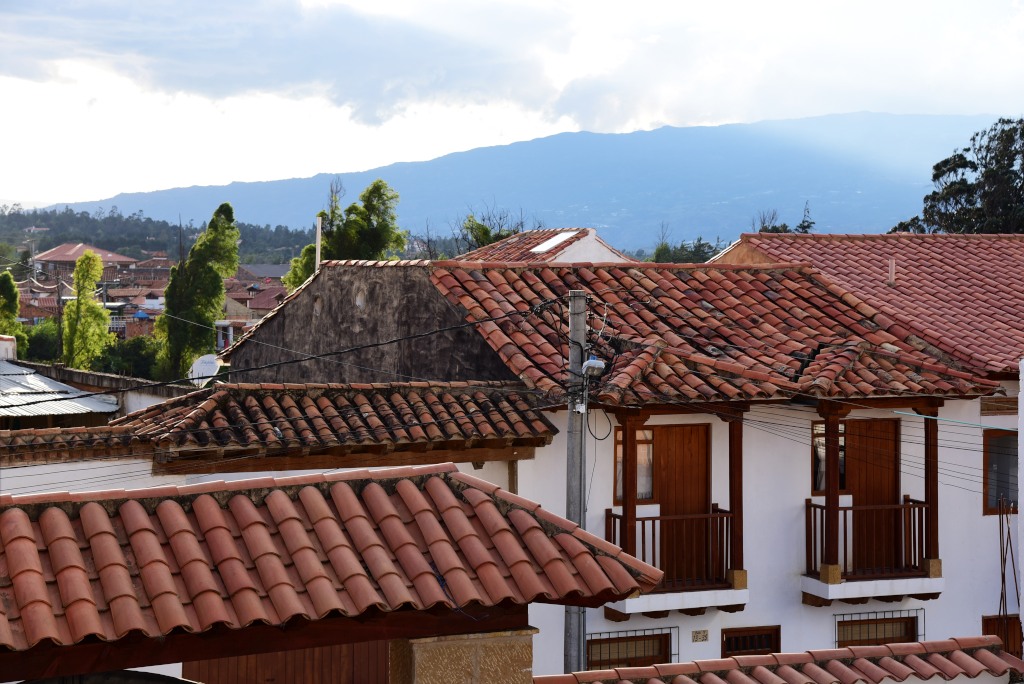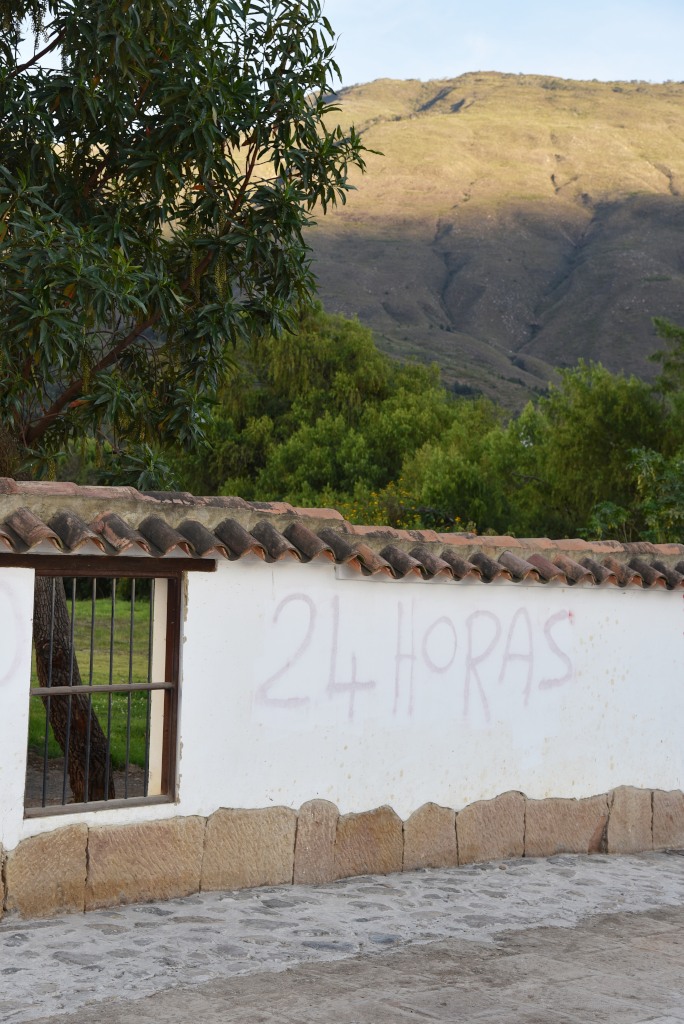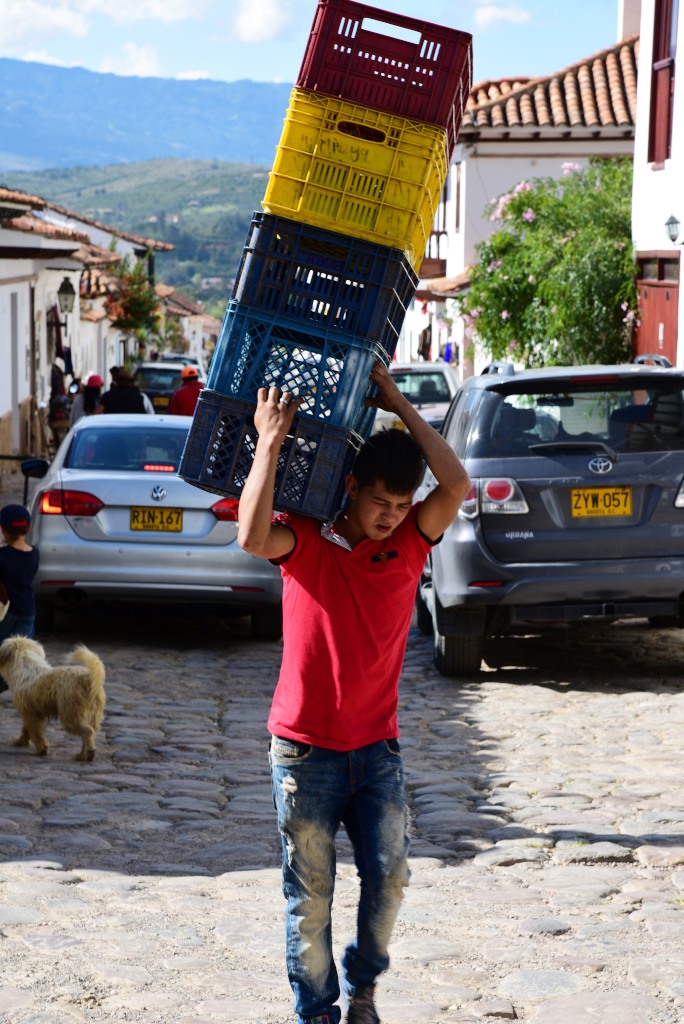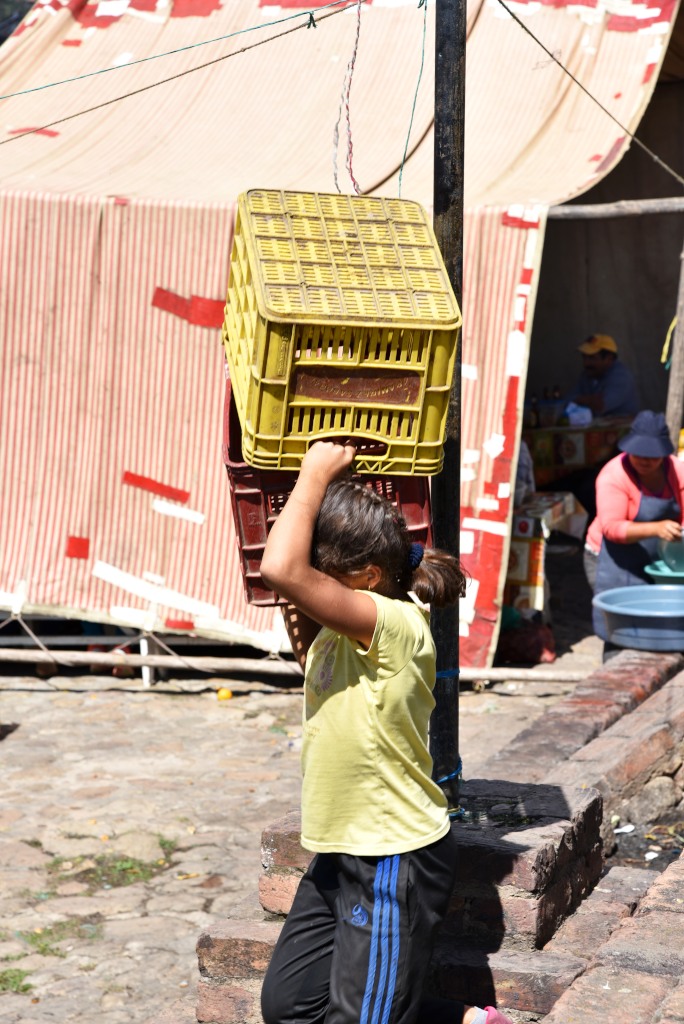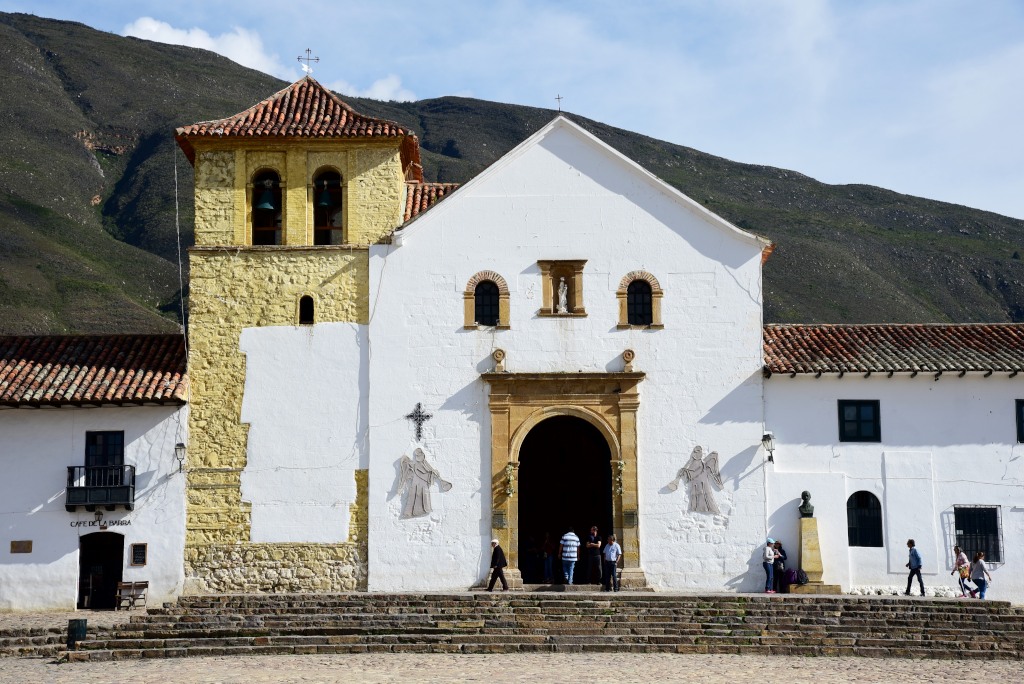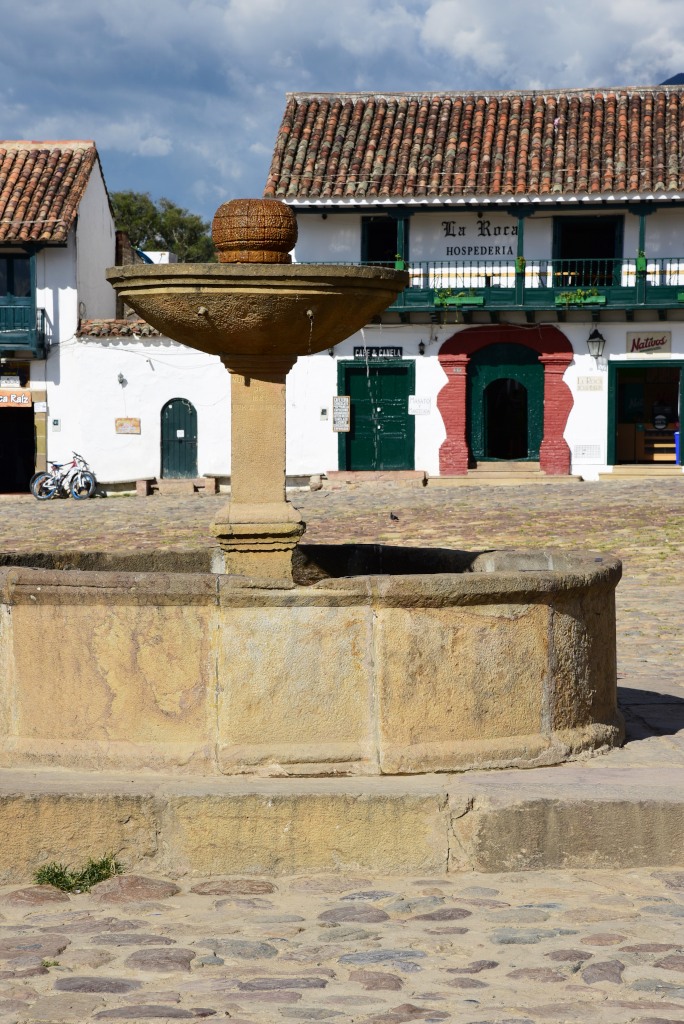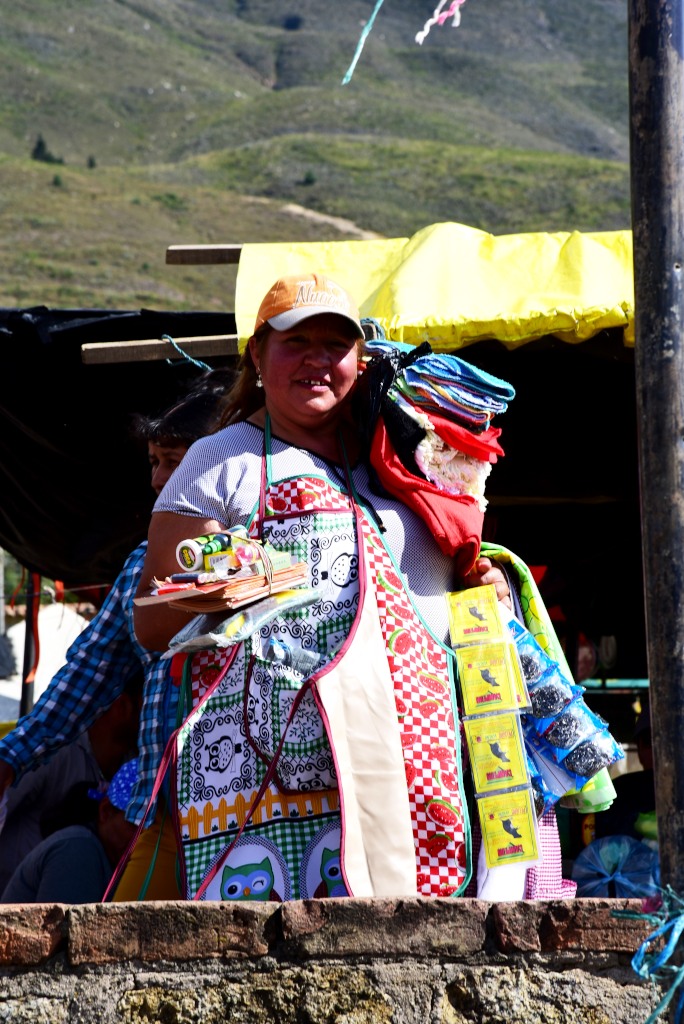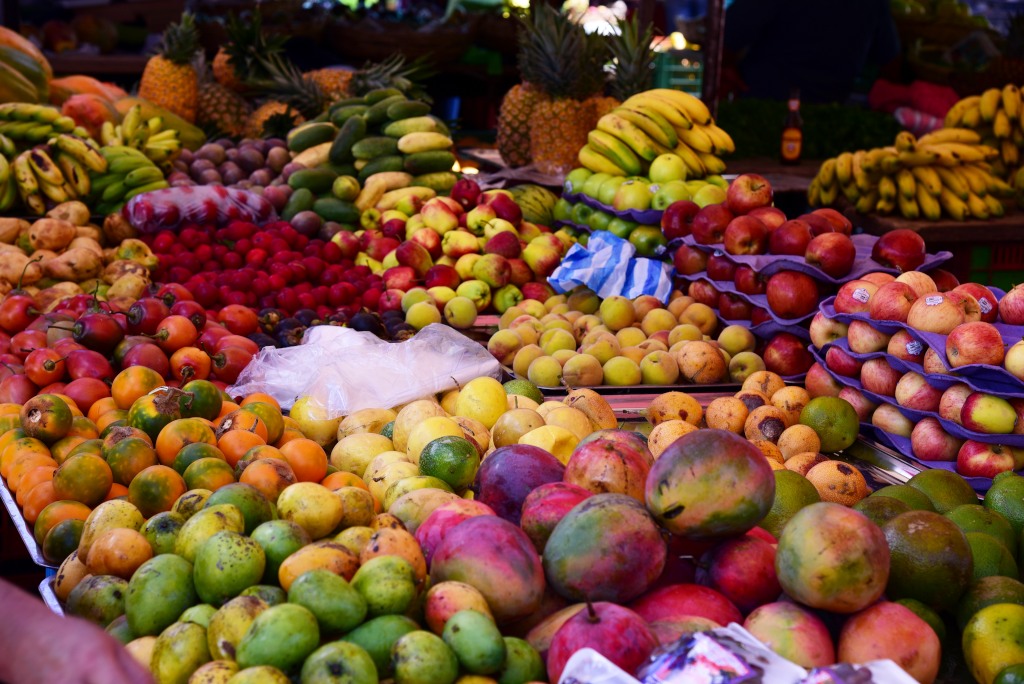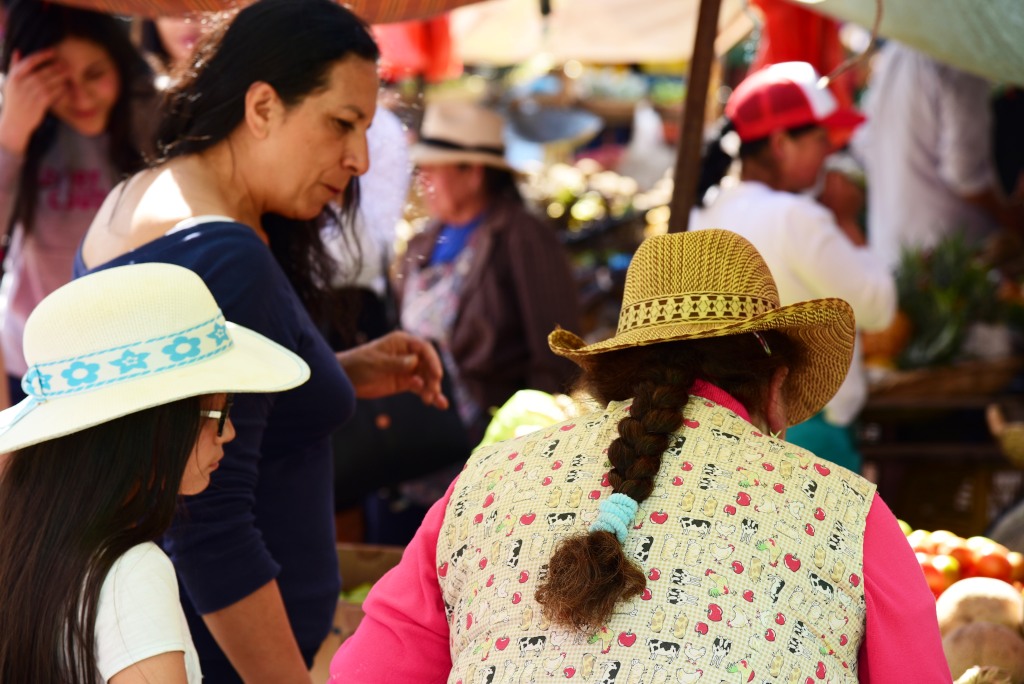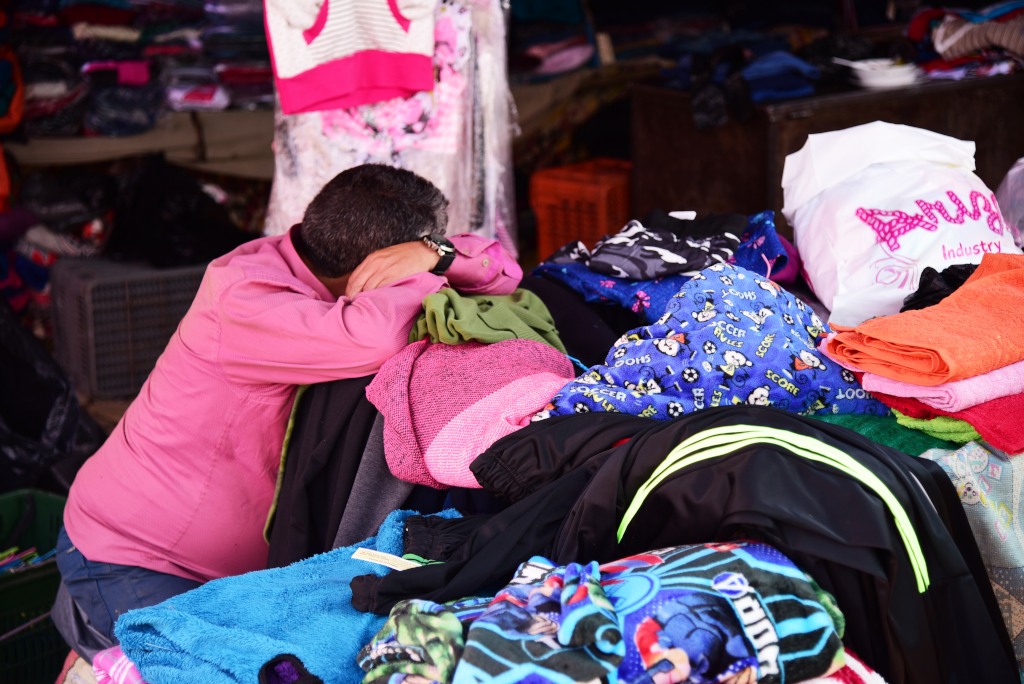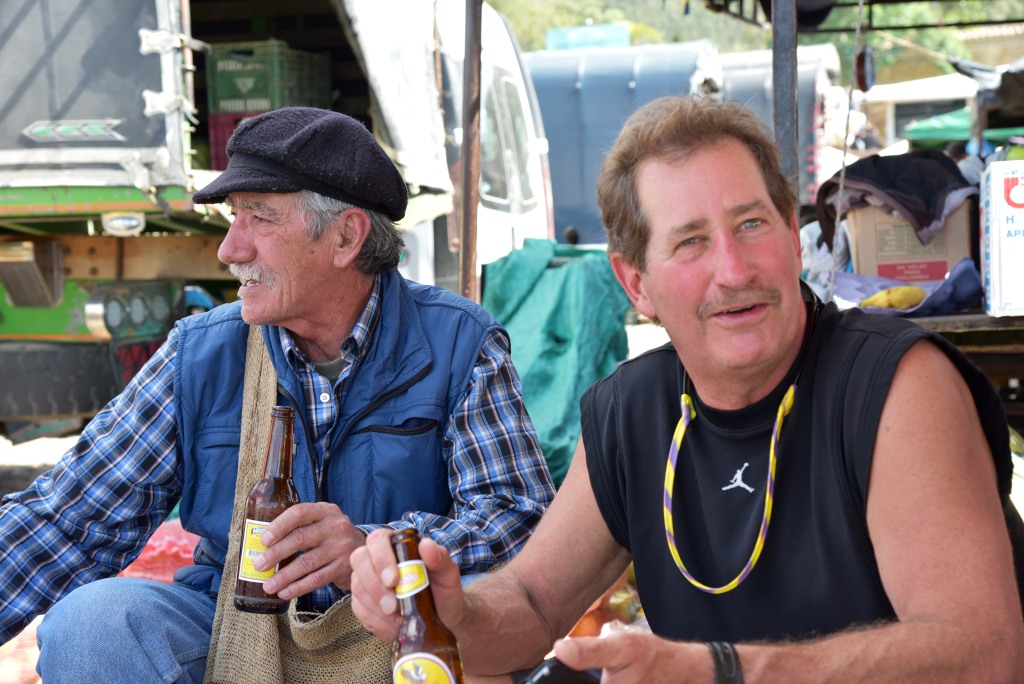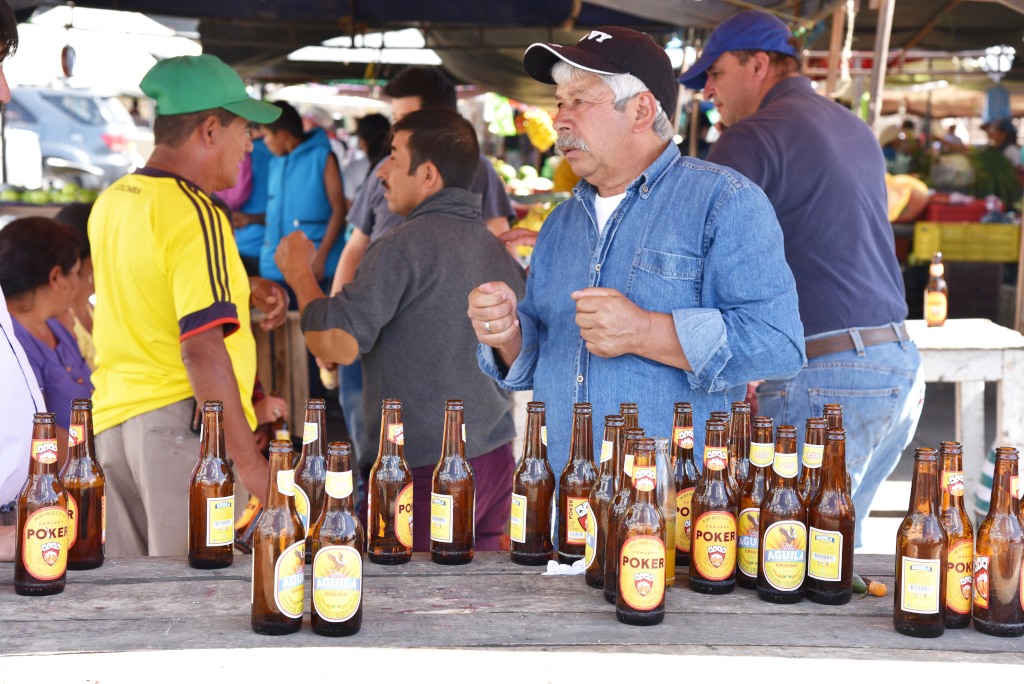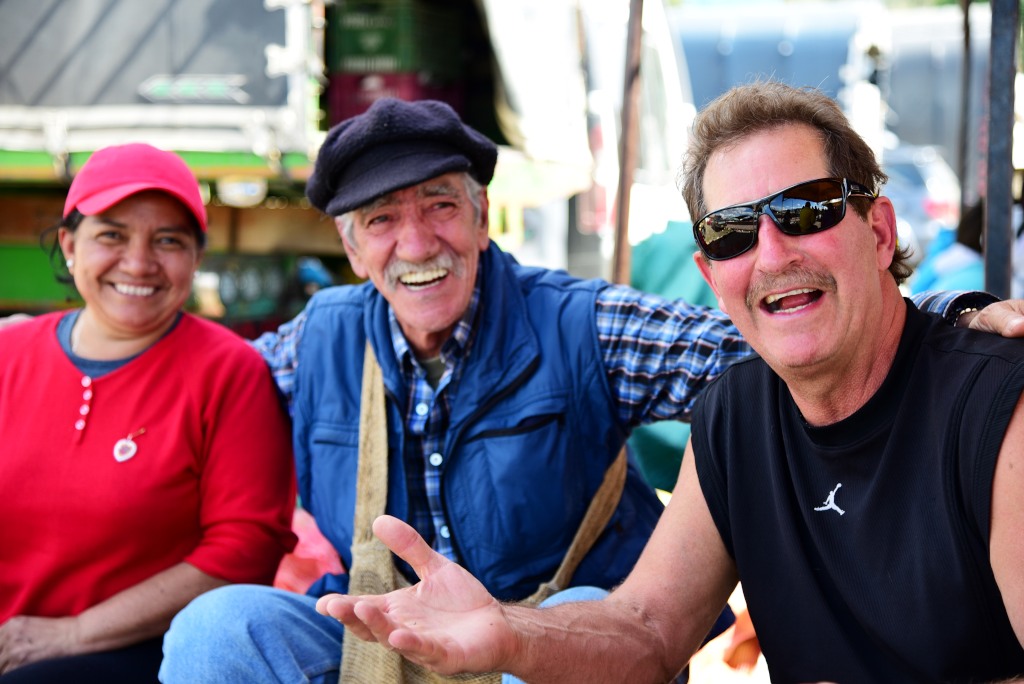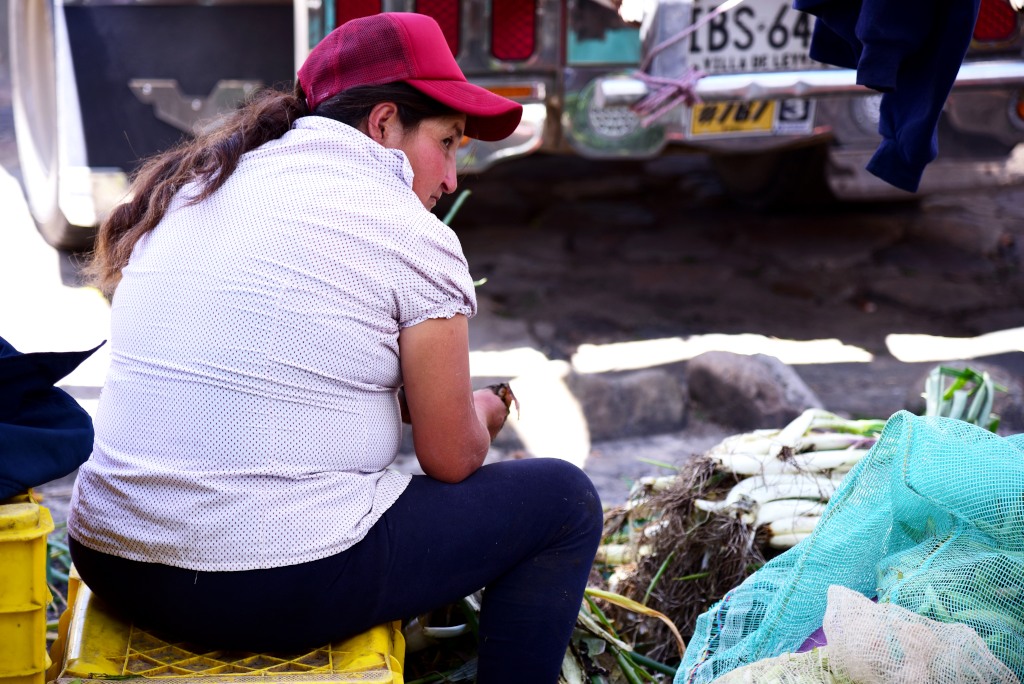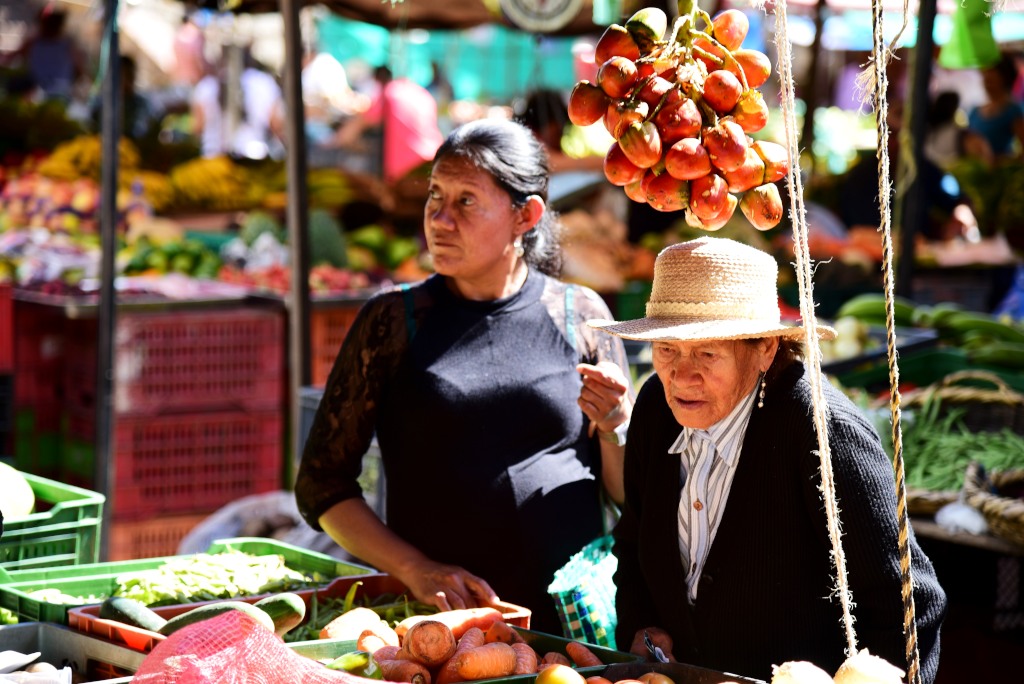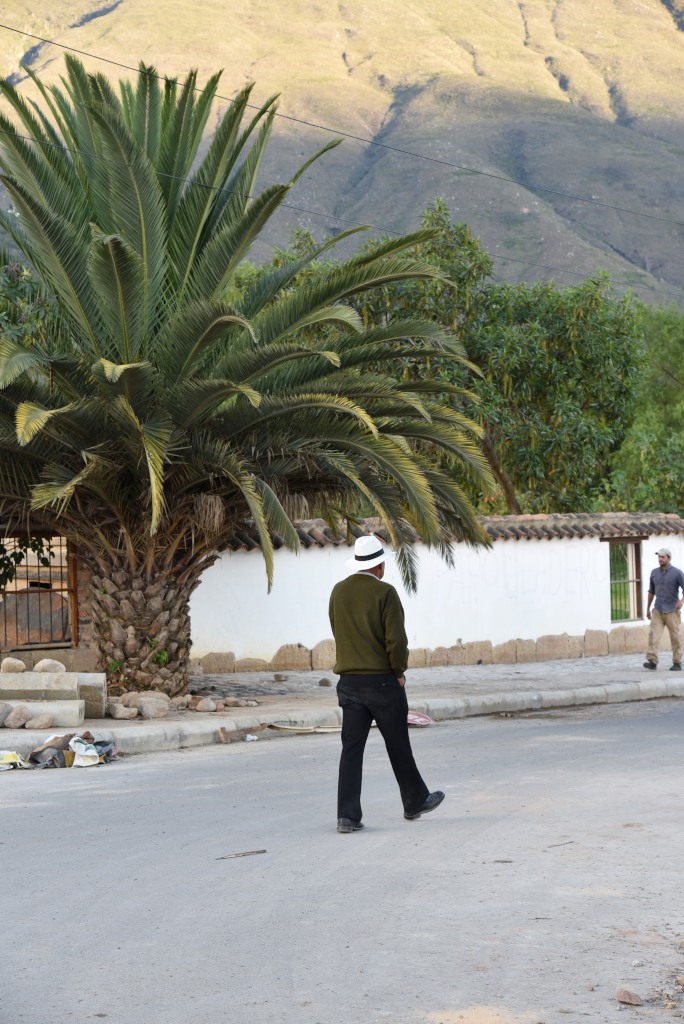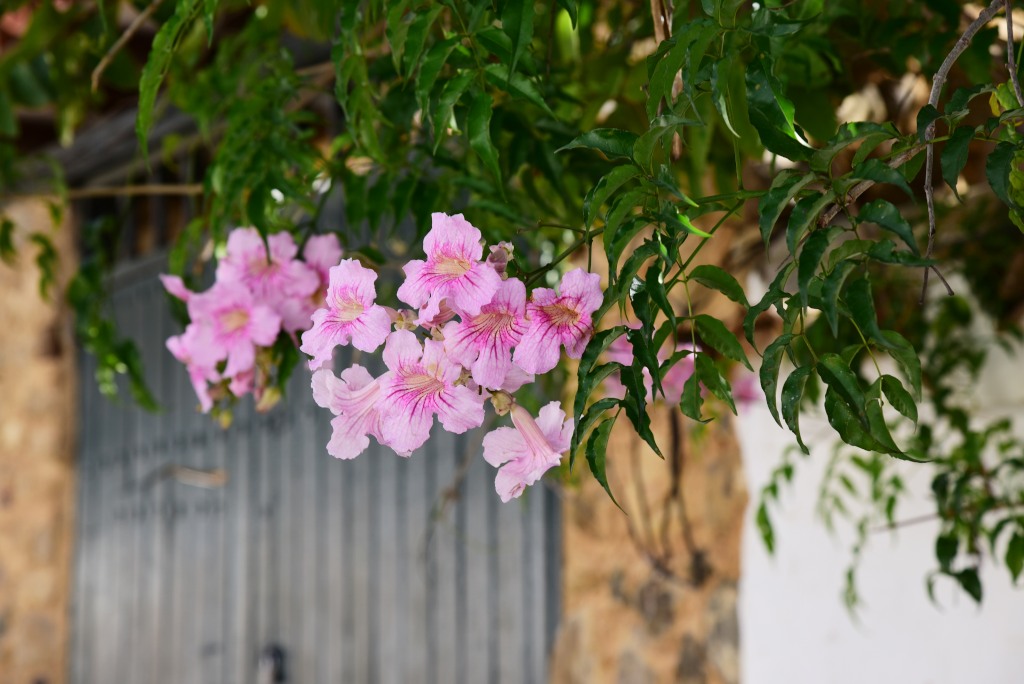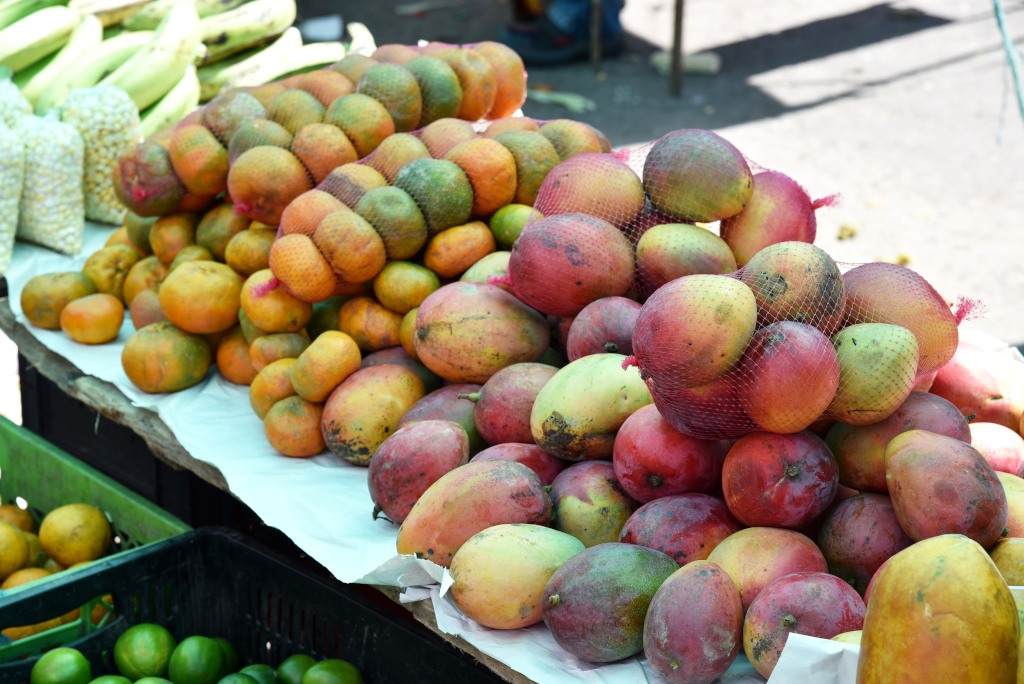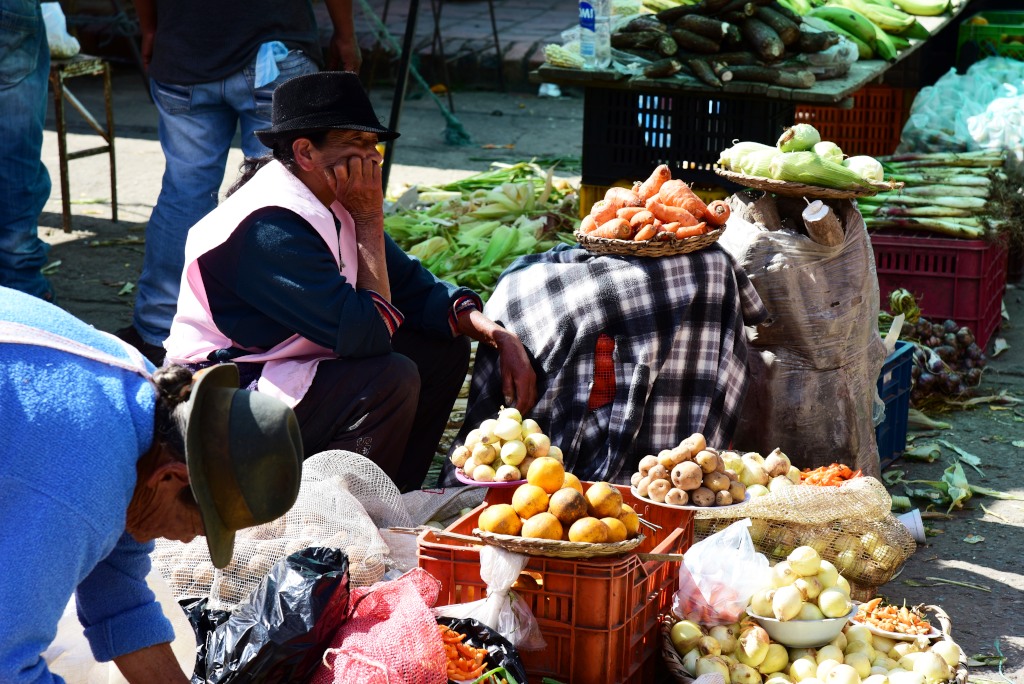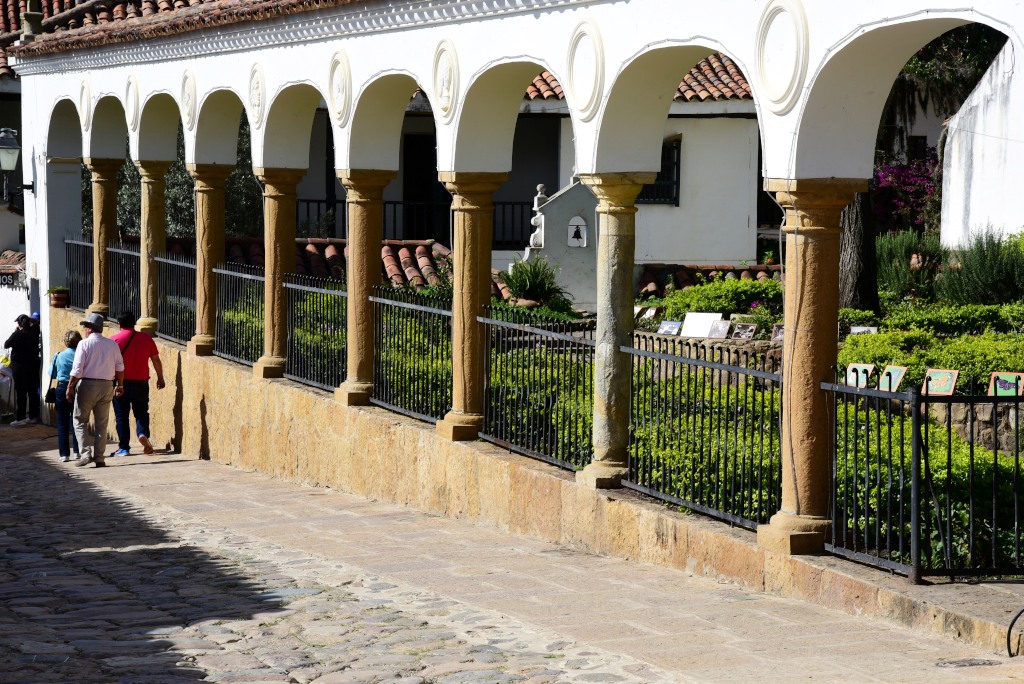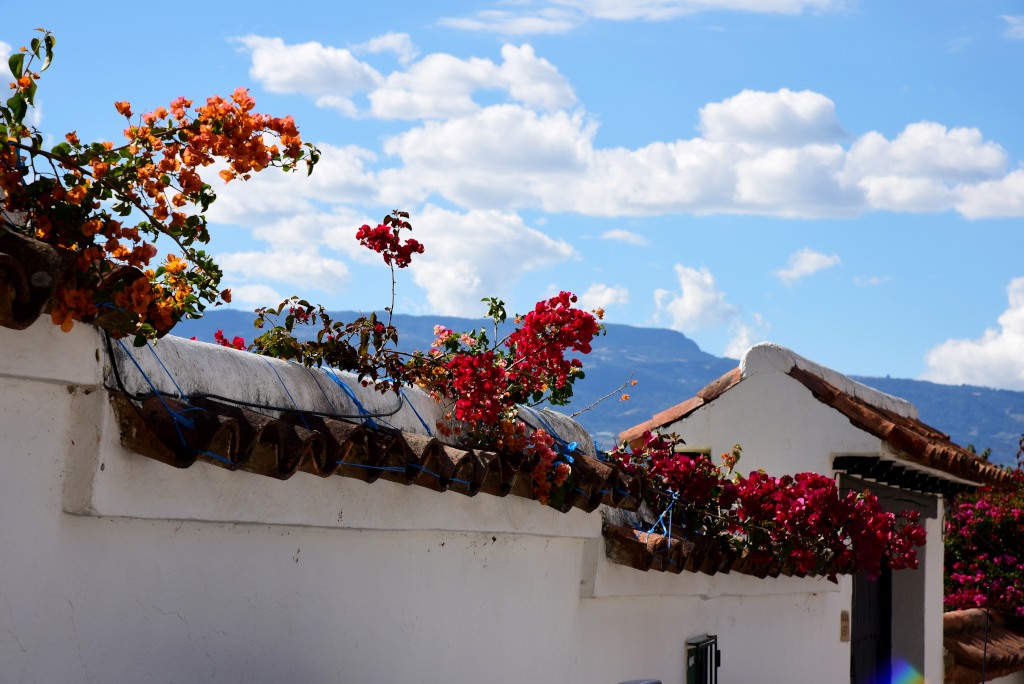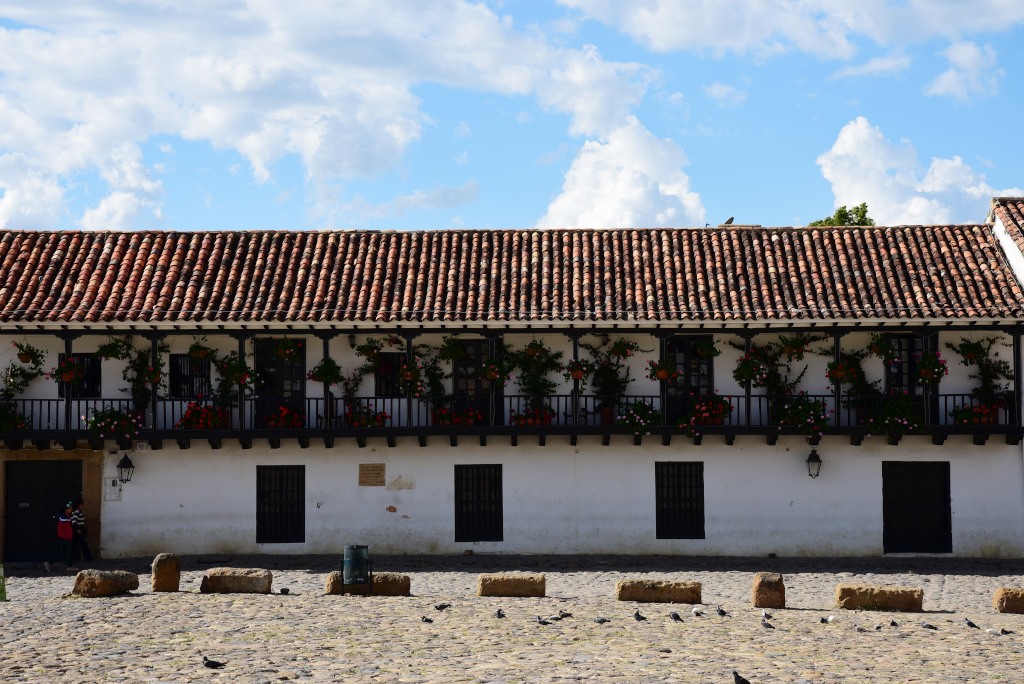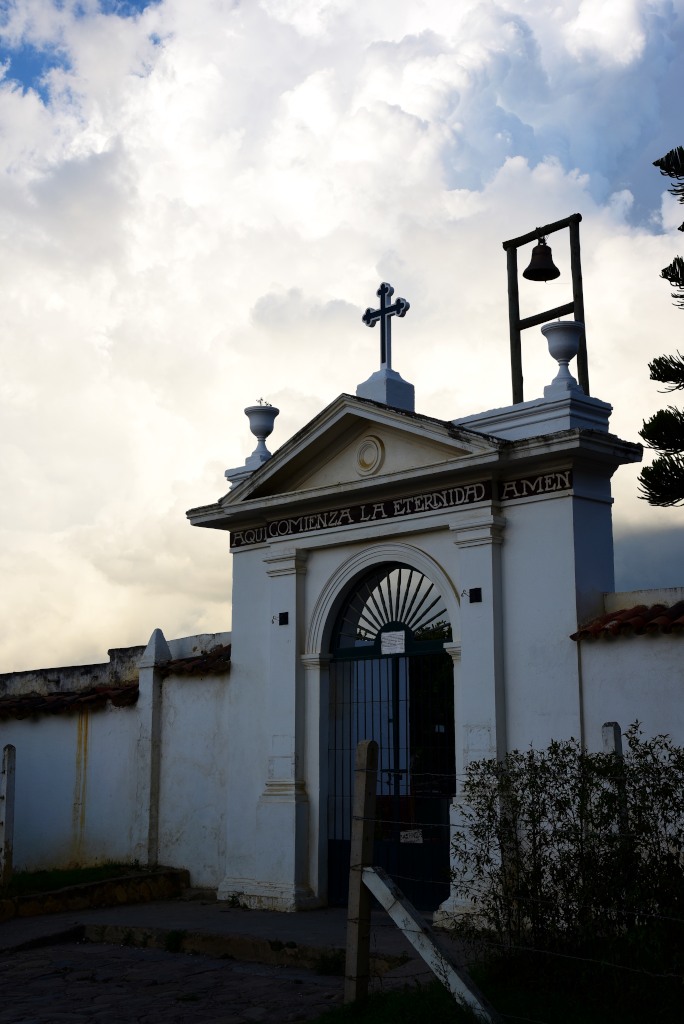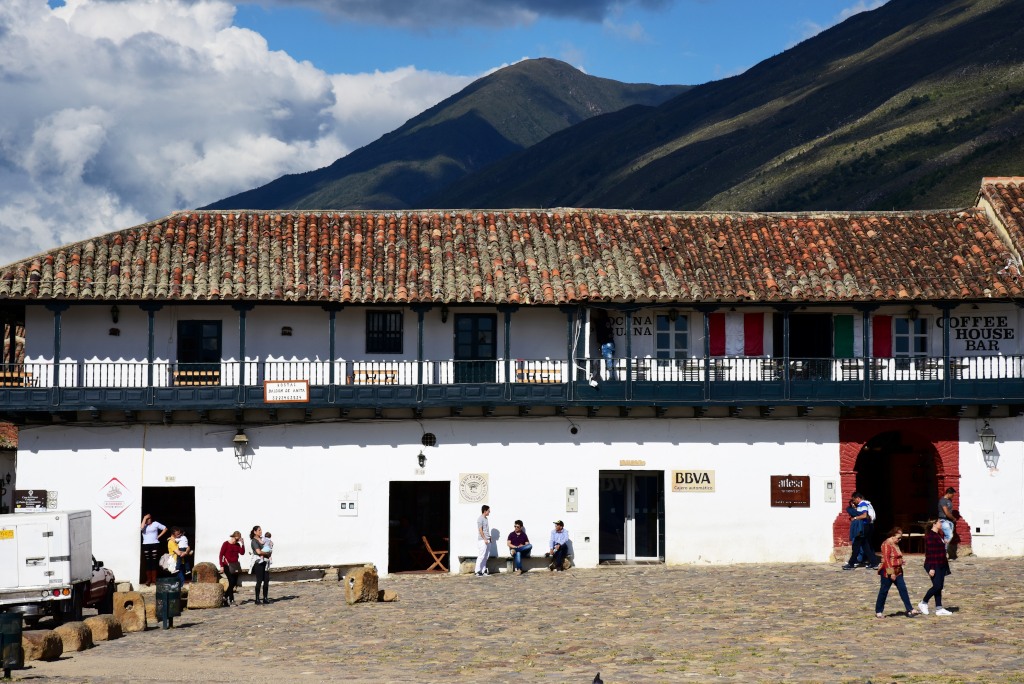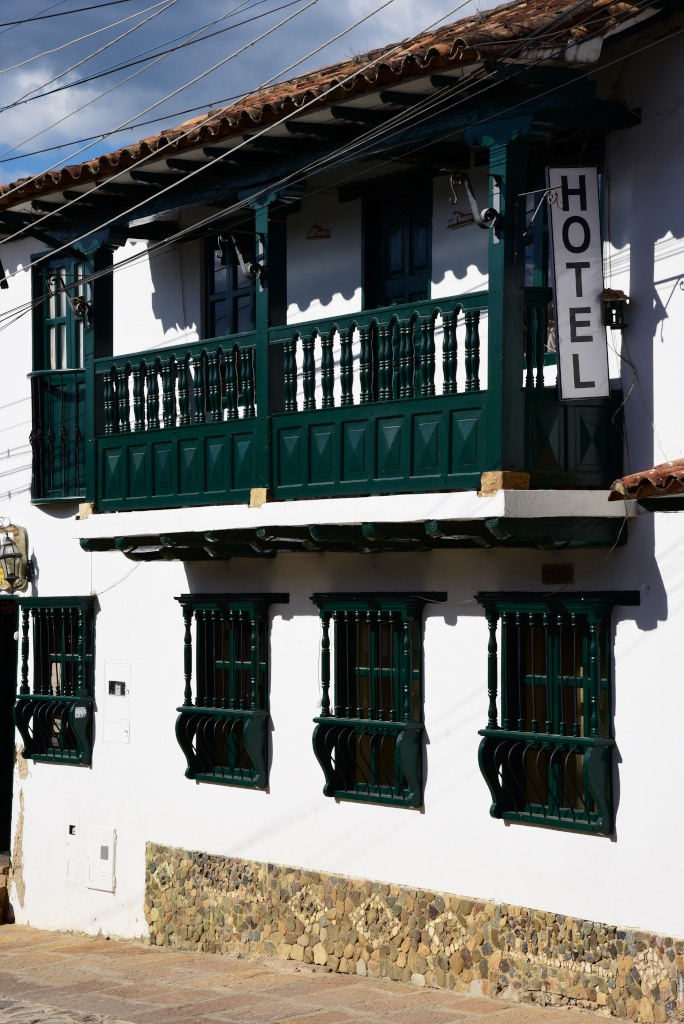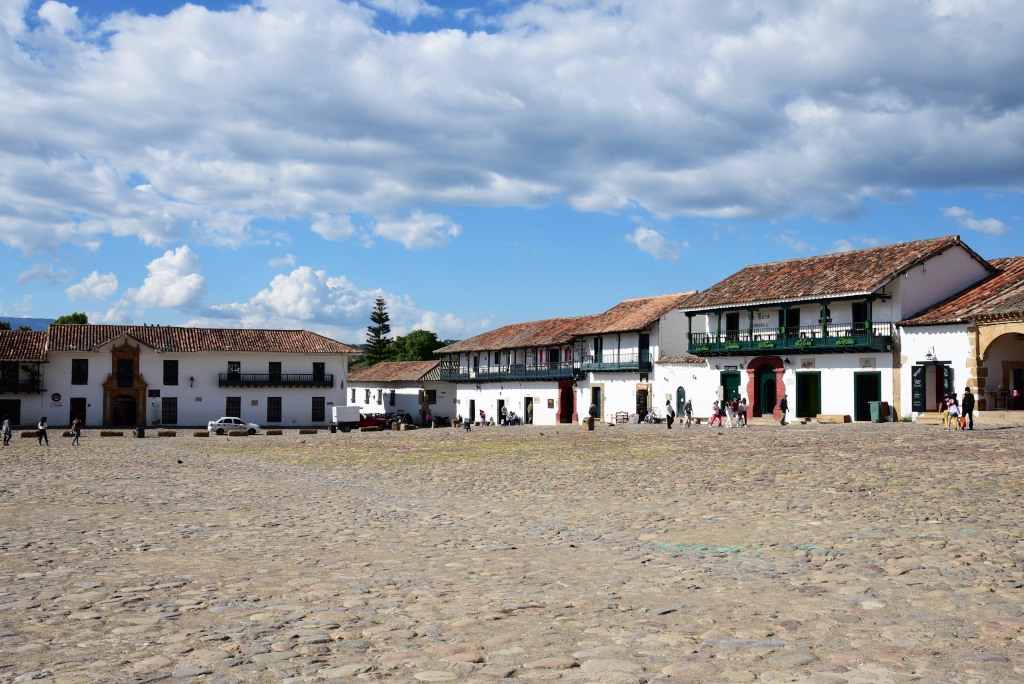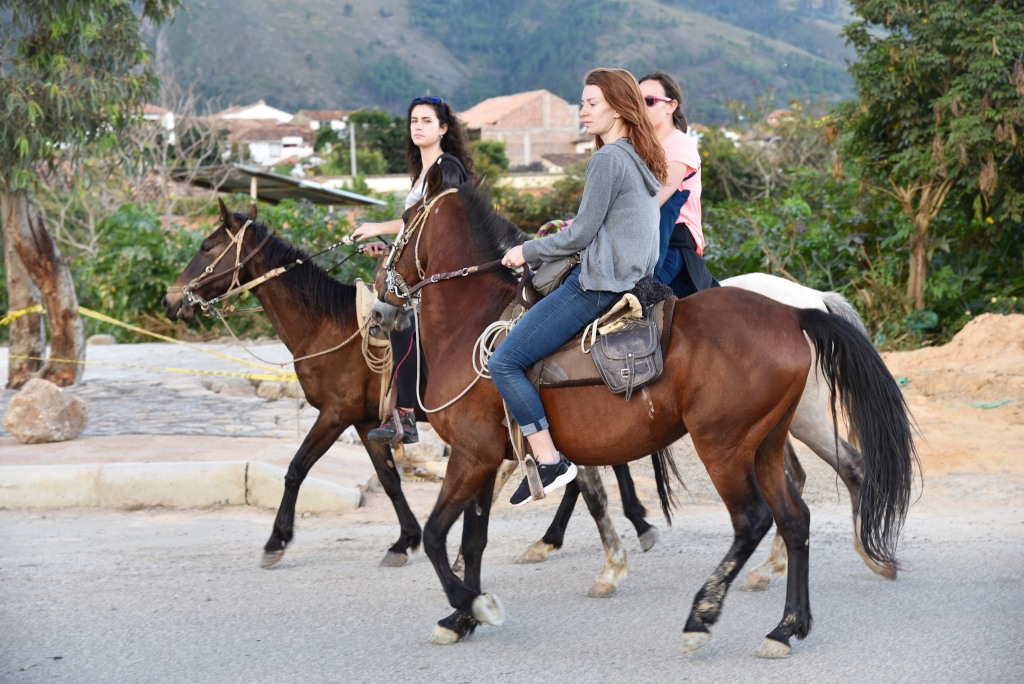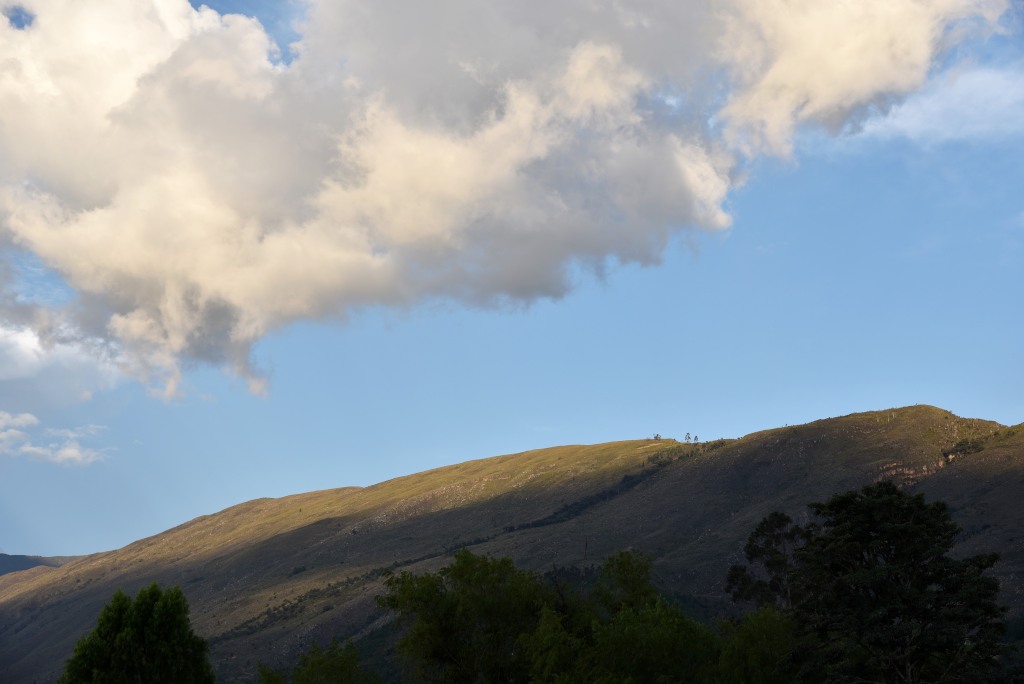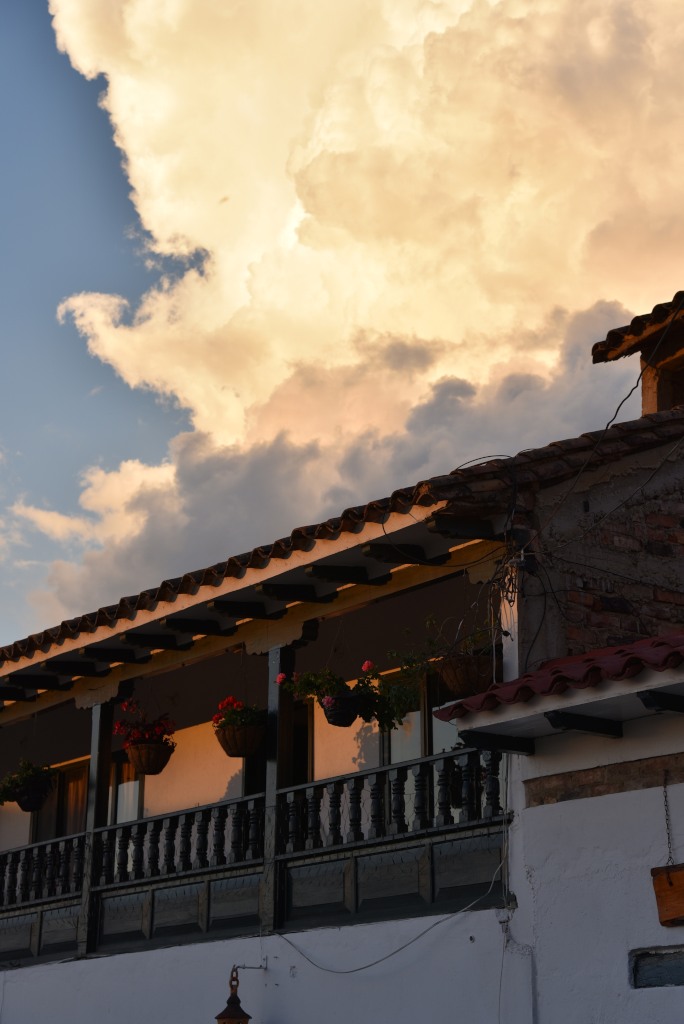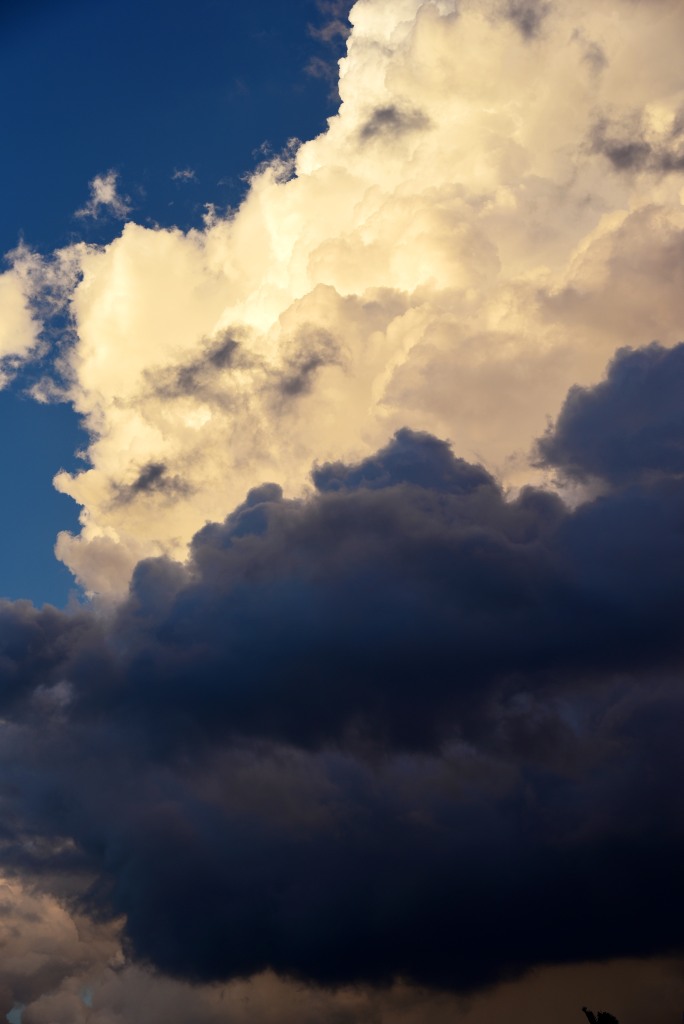January 27th, 2018
I pay the lovely lady at the reception, she calls a cab, a young student picks me up promptly and drives me to the bus station, where I buy my ticket for Villa de Levya, and wait patiently for the van to leave. The van goes from being virtually empty to full in a fell swoop, given that an entire family on a day’s excursion to Villa de Levya has boarded.
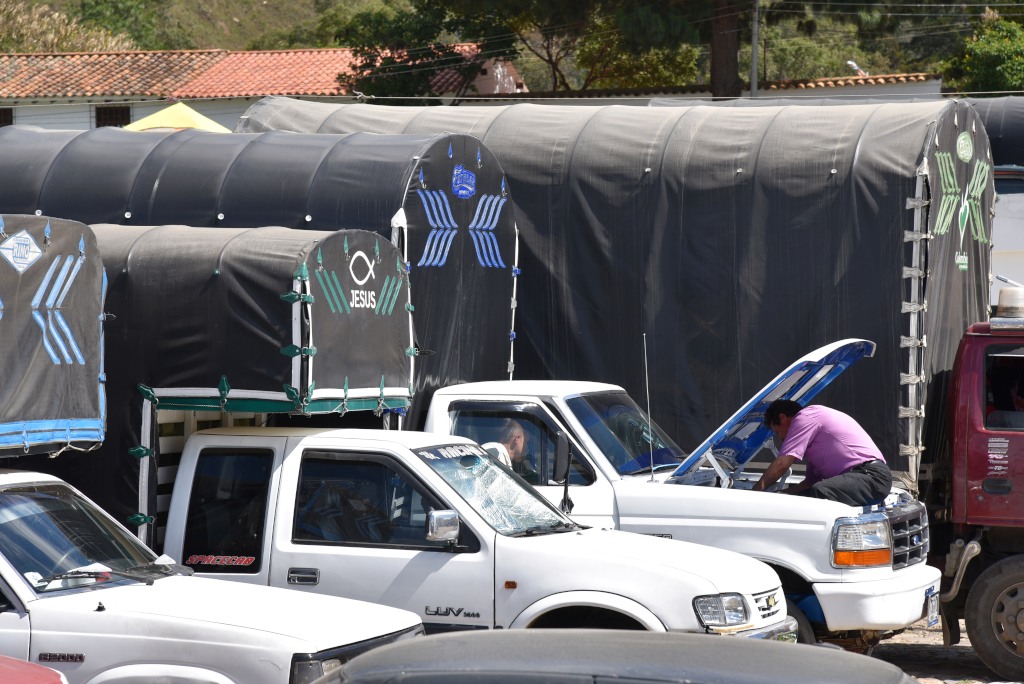
The trip is uneventful, other than the beautiful pastoral landscapes I have seen in previous days unfolding before me, the charming farmhouses with their sloping terracotta roofs set amidst the thick grass and trees, the cows grazing in the fenced in pastures, people working in the fields maintaining their crops, the hillsides soaring above us on either side of the valley, and the aroma of the fecund vegetation streaming in through the windows.
Despite the bus driver’s bluster, we do not stop off at the arepa stand in Tinjaca or a longaniza restaurant in Sutamarchan, but then it’s just as well.
The tour guide escorting the family to Vila de Leyva gives me words of encouragement when we disembark at the bus terminal, but ultimately sends me in the wrong direction looking for the Hospedaje de la Saenz where I was meant to be staying. It wouldn’t matter so much if it weren’t for the fact that I am carrying two packs, the cobblestoned streets are not the easiest to walk on, and the journey is largely uphill.
After a few frustrated attempts to locate the hospedaje, I am guided in the right direction by an Italian resident, and walk all the way back downhill to Carrera 13, the main road on which the hotel is located.
The Hospederia Villa de los Saenz occupies the upper floor of a building on the main road, bright, clean and modern, the rooms comprising a close-knit and not particularly memorable warren somewhat far from the main plaza. The room I am offered is smallish, with a double bed, bathroom, some shelving, a television screen, and windows facing outside. The room is clean and immaculately maintained, but does not contain a desk to write on, which is an issue for me, considering that I do spend a lot of time at a desk on my journeys! And for the elevated 80,000 pesos a night …
The staff is exceedingly accommodating, finding a plastic table for me to write on, and even better, assigns me to a far larger room with twice the amount of space, two beds, a balcony, and far more window space. Natural wood doors, door frames, a high, sloping timbered ceiling, and windows that open onto the bucolic world outside complete the appeal of the room. But then again, there are so many hotel options in town, closer to the plaza albeit for higher prices, mostly empty at this time of year, that it would only make sense.
The tipico restaurant next door offers a hefty lunch for 10,000 pesos, substantially more than in the town I just came from, but probably one of the best food deals in the very sought after Villa de Leyva. A hearty soup is followed by a plate with stewed chicken leg, aromatic white rice, a salad, and plaintain cake, in addition to a large glass of fresh mango juice. Now I just need a coffee!
Apparently, it is market day, and all I need to do is meander uphill along Calle 12 to reach the market. I trundle uphill past the classic Spanish colonial structures, with the whitewashed adobe and sloping terracotta roofs. Bursts of dense orange and purple flowers erupt over the walls at regular intervals, and occasionally flow down the whitewashed walls. People stagger in the opposite direction, laden with sacks of merchandise they presumably bought at the market.
Closer to the plaza, elegant hotels and restaurants appear, the restaurants spacious, well-appointed, and offering expanded versions of the basic menus at approaching twice the price I have seen elsewhere. And Colombia has some of the lowest minimum wages in Latin America. But Villa de Levya is a town obviously made for moneyed visitors; no simple folk are welcome here, unless to perform work or sell their wares at the Saturday market at the top of the town, underneath the towering barren hills looming above us.
The market is hardly a momentous affair, with merchandise strewn somewhat chaotically over the tables, tarps roped at odd angles low enough that I have to stoop to navigate the narrow aisles.
Most of what is on sale here is produce, although probably anything would be welcome to anyone who is of modest means in town, given the elevated prices being commanded in the town’s stores.
Markets are ripe territory for great photography, but not always. It is hard to shoot great portraits in this confined environment, since most people are too busy, bored, or in a contorted position, rummaging through baskets of goods or perusing merchandise. Then people may not be so receptive to having cameras shoved in their faces. Nor is the haphazard arrangement of produce on the tables very inviting.
The ruddy and content faces at one table are certainly appealing, and in pointing my camera at the gathered men holding their beer bottles in front of a table of empties, I get into a conversation with Juan, who introduces me in turn to Jay, a Colombian-American from Colorado who returned to live in Colombia decades ago. The predictable commentary about the U.S. follows, but the gathering is really intended to enjoy the company with Juan and Maria, their Spanish slow and perfectly enunciated.
Juan apparently owns an inexpensive housing option not far from town, which is good to know, considering how the prices can run here. Jay owns a tour company that takes people to the emerald mines of Muzo, although I suspect that there is more involved than just visiting emerald mines. We arrange to meet later on in the plaza, but now I would like to do another round of the market, then return to my hotel.
One last walk around town is in order before dusk sets in. Wanting to nap doesn’t help, but eventually I get myself out the door into the dusking light. In a back lane, a group of tourists on horseback is gathered with their guides, presumably at the end of a ride which is one of the attractions of Villa de Leyva. The play of light and dark is intensifying on the mountains set to the back of the town as the evening approaches. Locals dressed in the unmistakable poncho and sombrero walk up the streets at an exceedingly slow pace as I rush by, eager to catch the last few photographic moments.
I weave along the quiet Carreras to the north of the plaza, boutique cafes and hotels scattering along the cobblestone streets, another large church and plaza, and then the quaint bridges crossing the Rio Sachica, the sprays of orange and red bloom framed against the deep green in the approaching darkness.
I am experiencing major stomach cramps, and think I need to lie down for a while. It could be due to a number of reasons, including having been eating a lot of dairy, which I am fairly allergic to (arepas stuffed with cheese, pizza, etc.), and the copious amounts of plums I ate earlier on that I bought at the market probably didn’t help.
The good thing about the Hospedaje de la Saenz is that there are not just several local inexpensive tipico restaurants next door, but even more food stores, which may be a touch expensive by Colombian standards, but are as inexpensive as it would get for Villa de Leyva. After driving a young man somewhat crazy with respect to the prices of local hooch, I walk out with the obligatory bottle of water, mango juice, and some local Boyacá rum. I do have to say that alcohol in Colombia is fairly overpriced, but that is a different issue …
I had intended on visiting the Mia Nonna for dinner, so it’s up Calle 12 again towards the central plaza. As the evening progresses, the establishments further from the plaza have shuttered for the day, and all that remains is the glow of the streetlamps over the empty cobblestone alleys. I cross the plaza, full of carousing people, the young people gathered at the marginally hipper establishments, while the older visitors tend to gravitate towards the formal restaurants. Music emanates from every doorway, but on the other side of the plaza, continuing towards Carrera 8, things quieten down again.
The Mia Nonna is still open, so I am in luck. I wait patiently for the lasagna to be served, taking in the canned music of American soul classics and the moving ‘Somewhere over the rainbow’. And not surprisingly, the lasagna I am finally served may be very straightforward, but is made with the requisite dose of garlic, which makes me utterly happy, given the Colombian penchant for bland food.
Around the corner, in the Italian restaurant laid out on the expansive walled lot, a musician is singing a beautiful rendition of Silvio Rodriguez’s ‘Sueno con serpientes’ which is one of my all-time favorite songs. I hear firecrackers in the distance, but the sky seems clear, other than the scattered drops of rain …
I am almost sad to leave the area of the plaza, the bars, cafes and restaurants full, lively canned and even better live music emanating from each establishment, rows of people seated on the ledges lining the plaza, looking at me expectantly as I pass by.
I could join the crowds and just mill around, stop for a drink here or there. But once you hit the sauce in the bars, the budget goes out the window, and then I have a commitment to maintain this blog, my pointless labour of love. And so I trudge from the lively plaza down towards the main road one last time for the evening …

